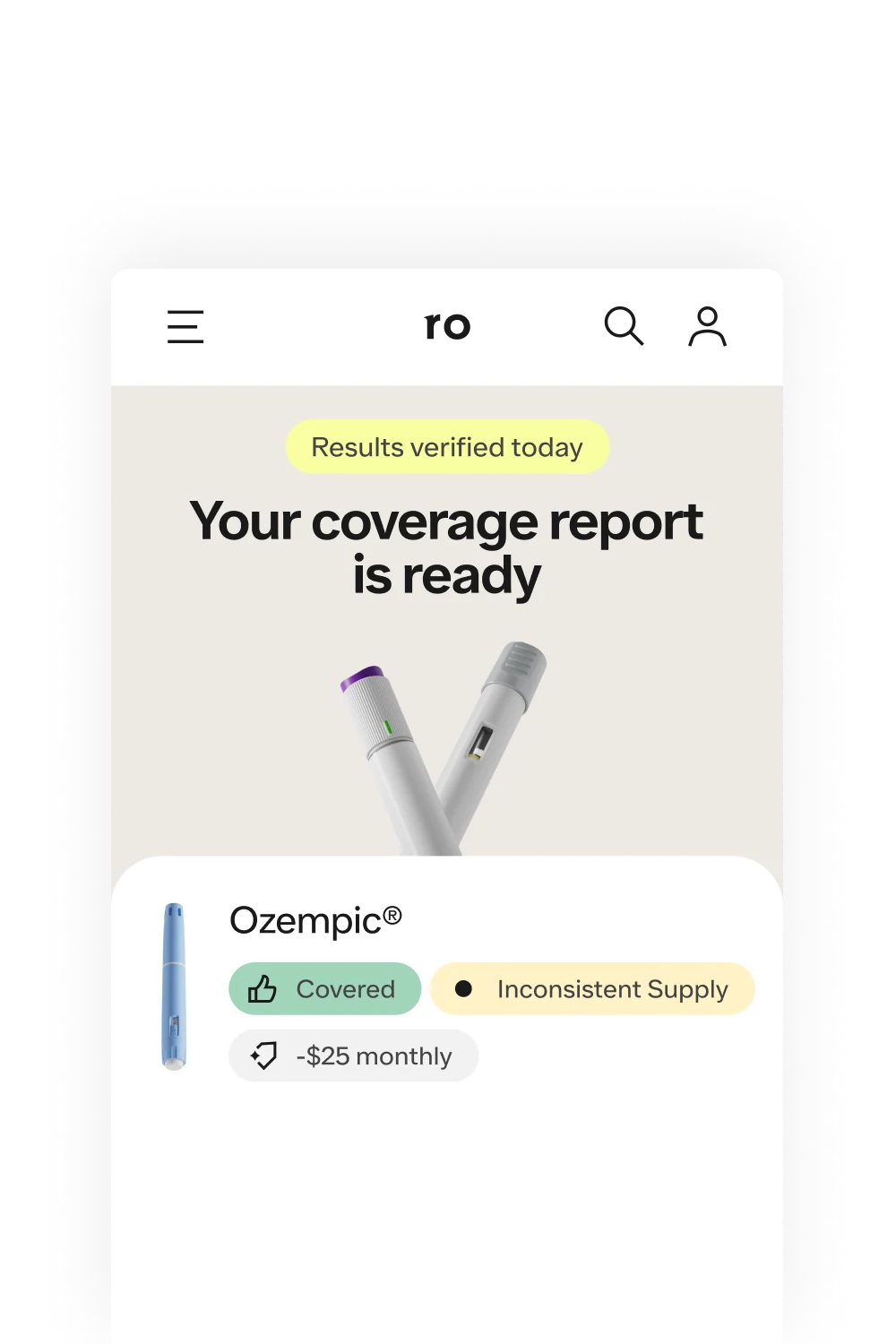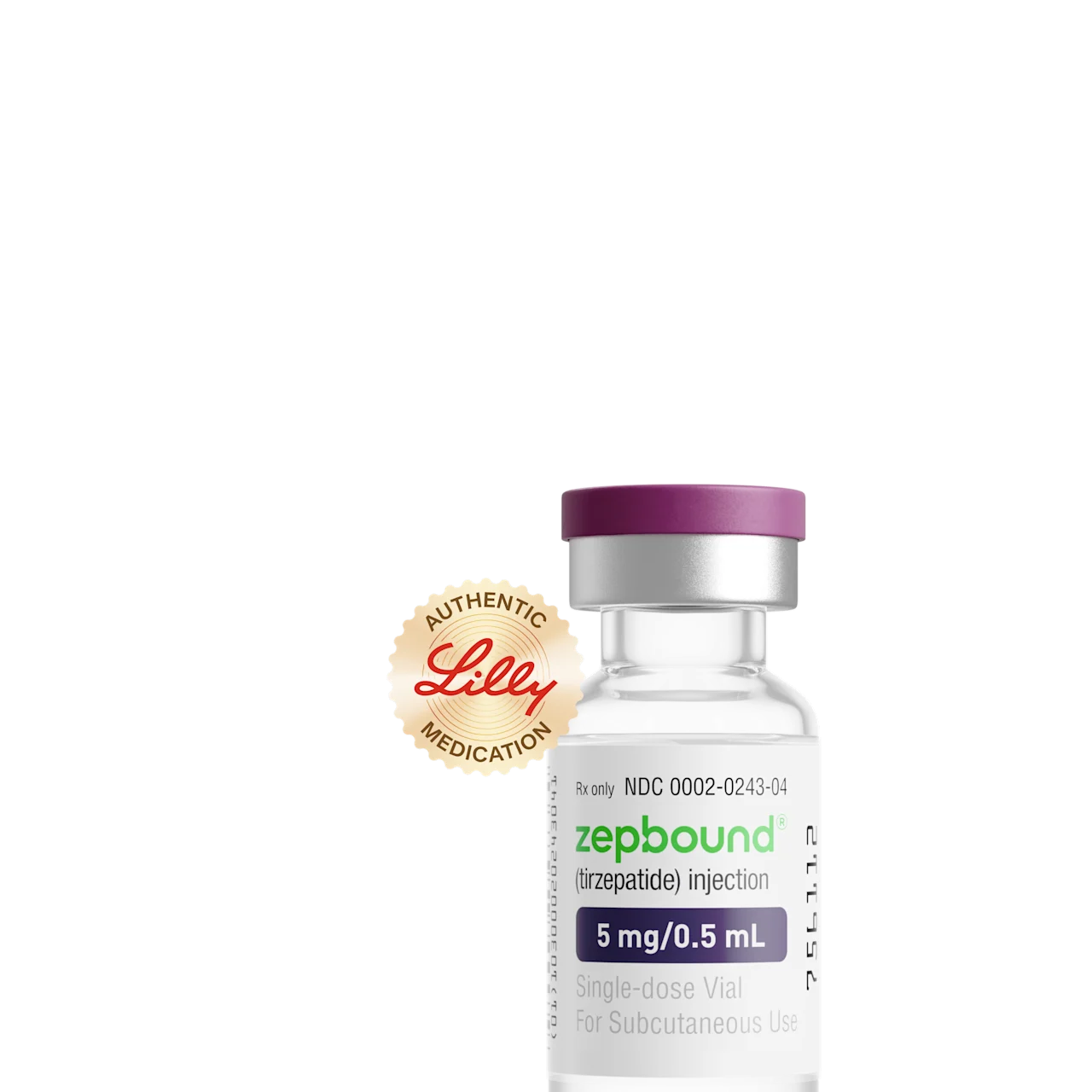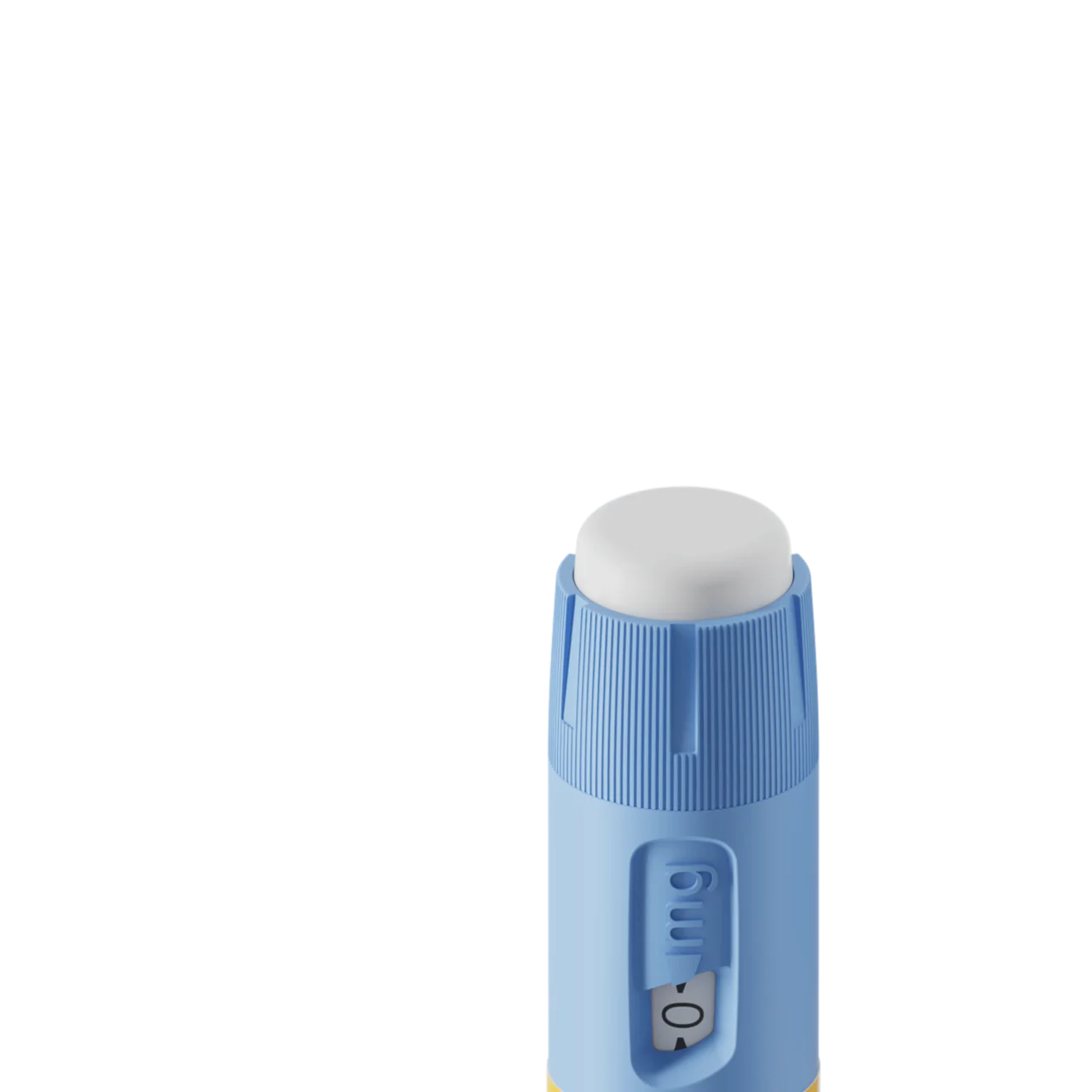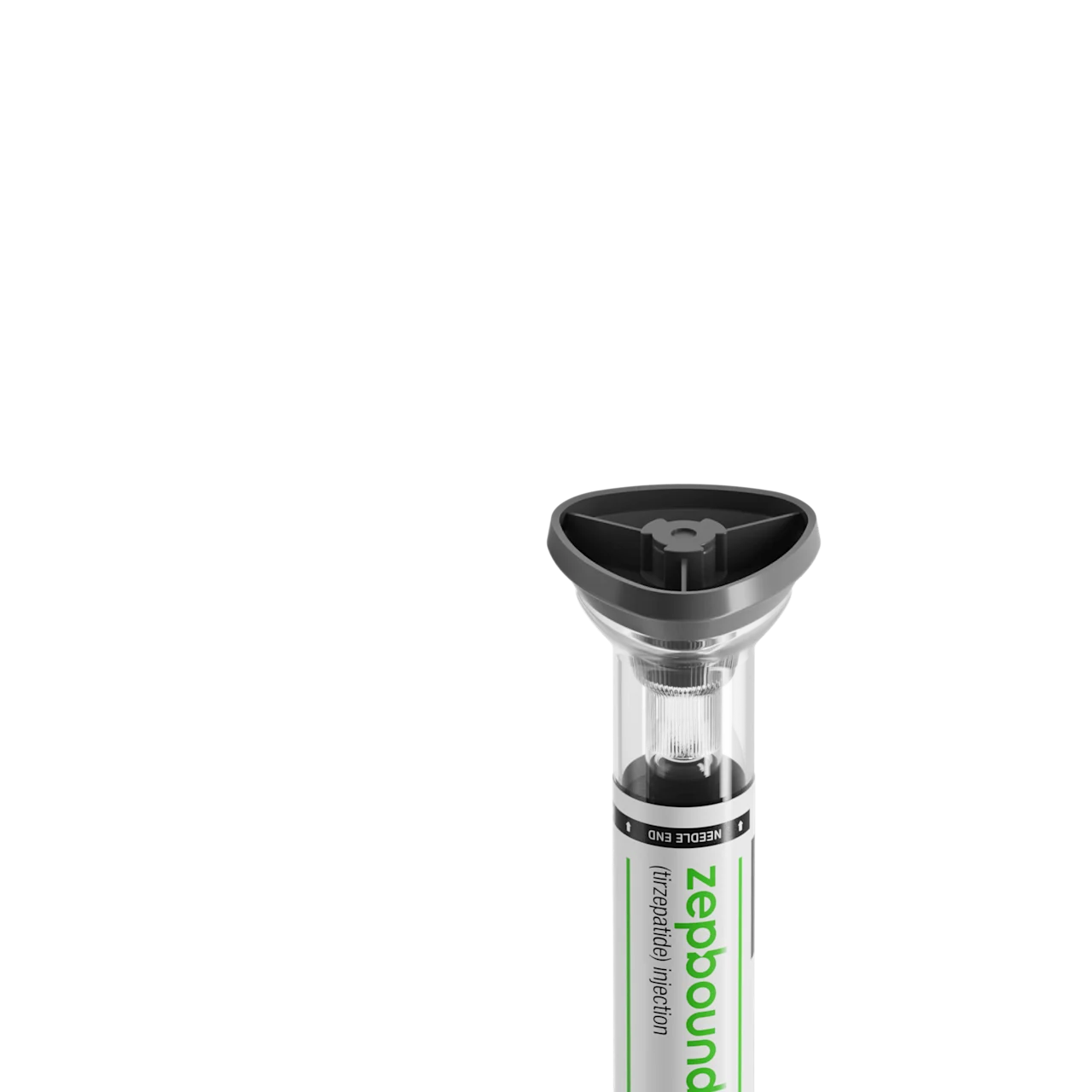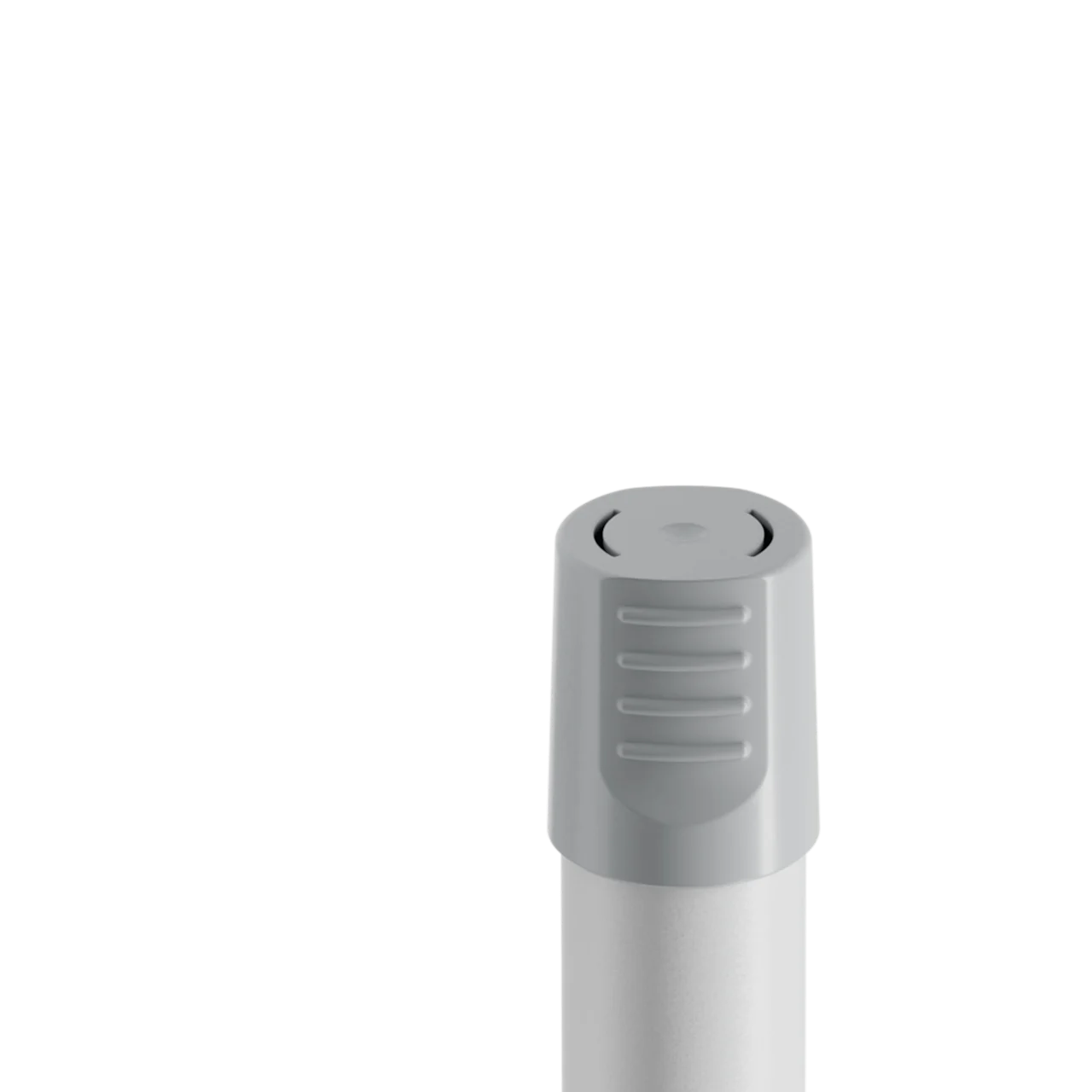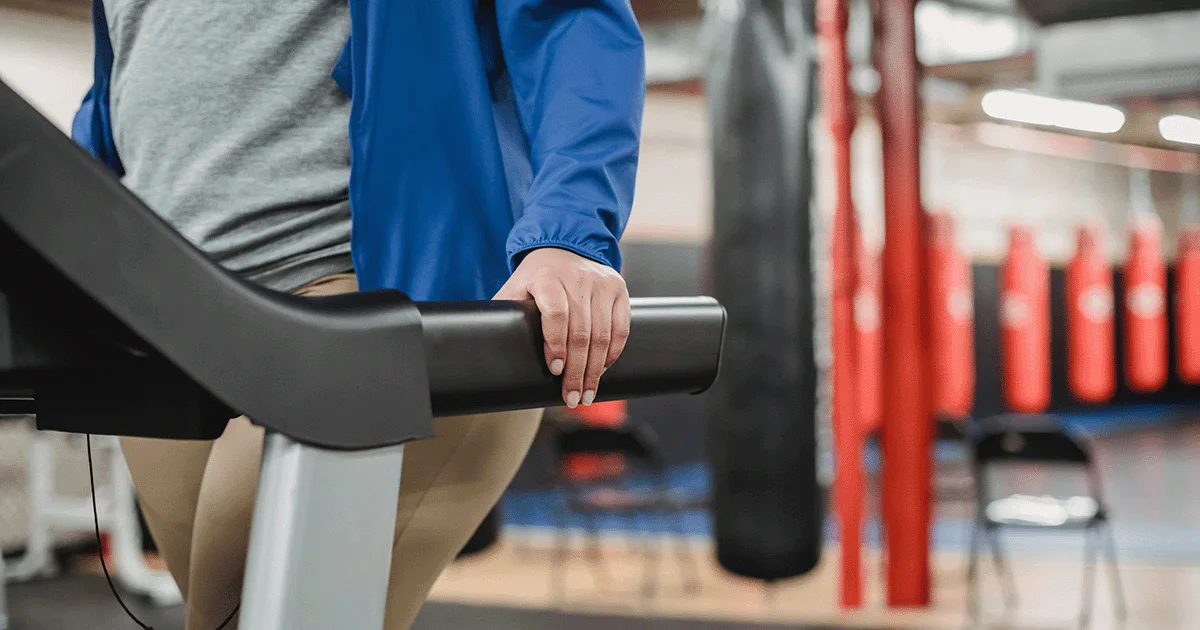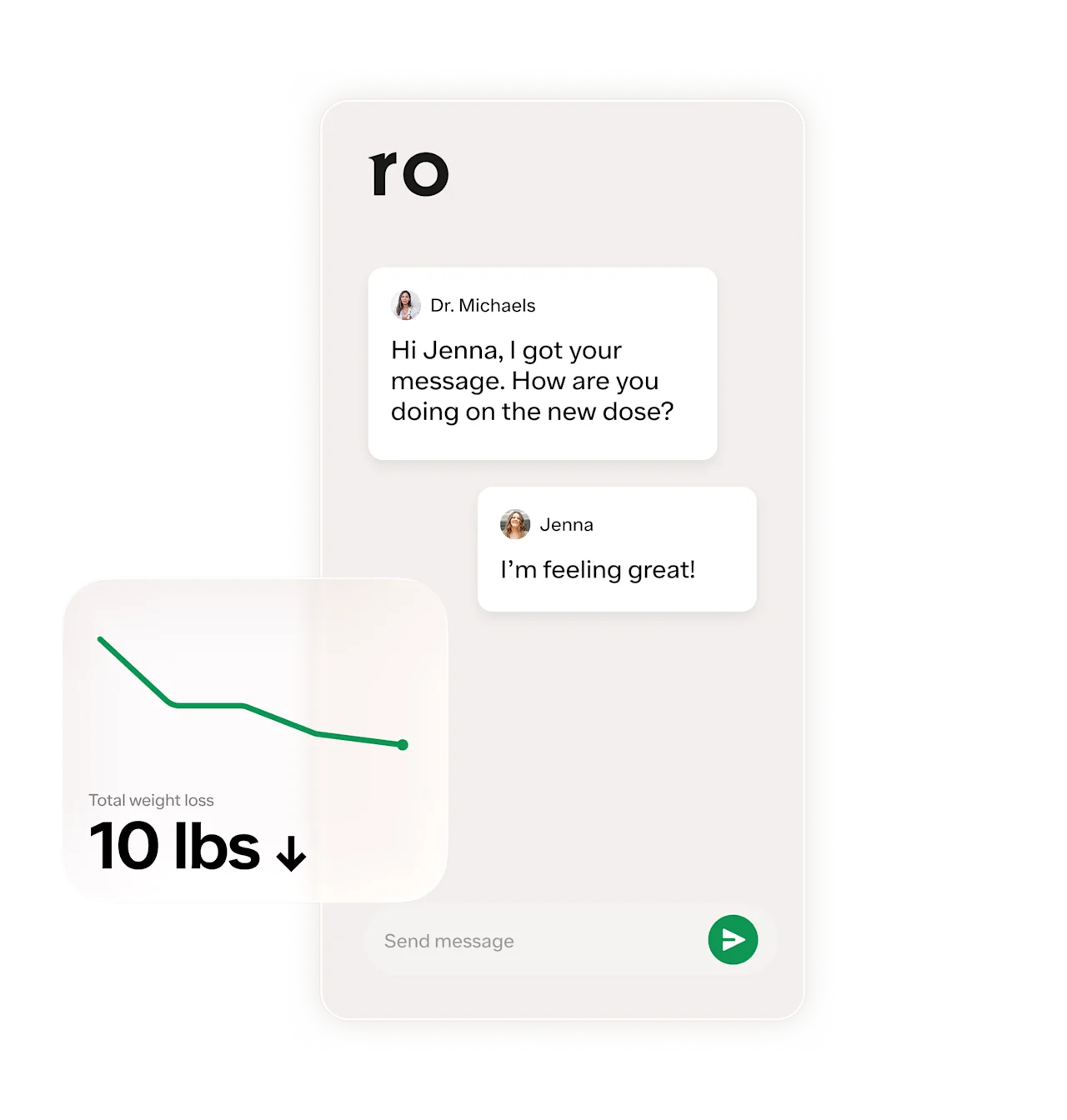Key takeaways
The “whoosh effect” is a term popularized by social media that describes a sudden drop in weight after a plateau. It’s not a scientific or medical term.
Some people online seem to think this happens because fat cells “fill with water” and then suddenly release it, but it’s more likely caused by a loss of water weight or other lifestyle changes.
While you can’t trigger the “whoosh effect,” you can reduce water retention and break through plateaus by adjusting your diet, exercise, hydration, and sleep habits.
Here's what we'll cover
Here's what we'll cover
Here's what we'll cover
Key takeaways
The “whoosh effect” is a term popularized by social media that describes a sudden drop in weight after a plateau. It’s not a scientific or medical term.
Some people online seem to think this happens because fat cells “fill with water” and then suddenly release it, but it’s more likely caused by a loss of water weight or other lifestyle changes.
While you can’t trigger the “whoosh effect,” you can reduce water retention and break through plateaus by adjusting your diet, exercise, hydration, and sleep habits.
Have you ever noticed your weight stays stubbornly the same on a weight loss plan, only to suddenly drop — seemingly overnight? You may have experienced what some call the “whoosh effect.” Popularized by social media and online weight loss communities, the term describes a sudden loss of weight after a plateau. It’s almost like the fat just “whooshes” away.
But what is the whoosh effect, exactly? Is it real? And if so, can you make it happen on purpose? Let’s take a closer look at what the science says about this viral phenomenon.
What is the whoosh effect?
The whoosh effect is a term some people use to describe the seemingly sudden weight loss that occurs after a weight loss plateau. Before the whoosh effect, you might feel like your weight is stalling. You might even feel more bloated than usual. Then, seemingly overnight, you:
See a drop on the scale
Notice less body fat or belly fat
Feel slimmer in your body or your clothes
As one Reddit user shared in a post on the topic, “[I’d be] happy with my progress, feeling like I looked better, and then all the sudden for a few days I would be like ‘how did I get squishier? I haven't gained weight, why do I look so squishy??’ And then a couple of days later it would be fine again and I would have lost more weight."
So, what’s behind the “whoosh” phenomenon? Is there any science behind the effect?
Why does the whoosh effect happen?
First, let’s get one thing out of the way. The whoosh effect isn’t recognized by the medical community. Having said that, there are a few theories behind what could be causing the sudden drop in weight some people report after a plateau. Let’s start with the popular theory circulating on social media. Supposedly, the whoosh effect is caused by water retention in your fat cells. Here’s the (unproven) theory:
When you’re in a calorie deficit (aka eating fewer calories than you burn), your body burns fat for energy.
These now depleted fat cells temporarily fill with water. This makes your body feel squishy or bloated, even though you’re losing fat.
Eventually, seemingly overnight, your body releases all of that retained water, leading to a leaner appearance and drop in body weight.
There’s one major problem with this theory: fat cells don’t work that way.
What does science have to say about the whoosh effect?
There’s no scientific evidence that fat cells fill with water and then suddenly flush it out. Instead, the whoosh effect is more likely caused by a release of water weight or by new lifestyle changes that reset your metabolism after a plateau. Let’s start with the water weight theory.
Water weight loss
Water retention describes a build-up of fluid in your body. When your body finally sheds that retained water, it can feel like a sudden loss of weight or body fat. (Key words: feel like). Even though you’ve been losing weight all along, the release of water weight creates a more noticeable drop, aka whoosh effect. So what causes your body to hold onto excess water? We’re so glad you asked.
Several things can cause water retention, says Lauren Benser, MS, RD, LD, a registered dietitian who regularly works with women navigating perimenopause, menopause, and GLP-1 weight loss medications. Potential causes of water retention include:
Eating too many salty foods. When we consume excess sodium, Benser says, it disrupts the concentration of electrolytes in our bloodstream. To counteract this, water gets pulled from our cells into the circulation and the kidneys respond by conserving more water instead of flushing it out, leading to water retention.
Inflammation from exercise. While working out helps with weight loss, it can cause temporary increases in water retention, too, Benser says. This is especially true when you’re exercising outdoors in the heat. “Exercise is acutely inflammatory, which isn’t a bad thing, it just means the body is repairing.” Part of that repair involves sending blood flow and fluid to the muscle cells, which can cause temporary swelling.
Normal hormonal fluctuations during your menstrual cycle. In the days leading up to the menstrual period, shifting levels of estrogen and progesterone can cause the body to hold onto more sodium and water. “Resulting symptoms can be bloating, feeling swollen or puffy, and changes that make a woman feel like she has gained weight when in reality it is just water.” This extra water weight can be as much as one pound, according to one study.
Not drinking enough water. Before you start thinking the solution is to drink less water, don’t. Being dehydrated can cause your body to hold on to excess water weight, too. Watch out for dehydrating liquids as well, such as alcohol. Alcohol disrupts your electrolytes and increases urination, causing the body to hold onto whatever water is left as a result, Benser says.
Other causes of water retention include certain medicines and health conditions, such as sunburn, pregnancy, and kidney or liver problems.
Other possible reasons for the whoosh effect
Some people describe the whoosh effect as intermittent throughout their weight loss journey. They lose weight, stall for a few days, and then notice a drop on the scale. For others, the whoosh effect might occur after a more extended weight loss plateau. In these scenarios, it’s possible the whoosh was caused by making new lifestyle changes to restart their metabolism.
“Plateaus in weight loss are so common,” Benser says. They inevitably happen when your metabolism plays catch-up to your new lower-calorie diet and increased physical activity. “The best way to combat this adaptation is to keep your body on its toes, so to speak, and continually challenge it with new exercises,” she says.
Can you trigger the whoosh effect?
There’s no proven way to intentionally trigger the whoosh effect — mainly because, scientifically speaking, it doesn’t actually exist. However, the factors people associate with a whoosh (like losing water weight or breaking a plateau) can absolutely be triggered.
But first, a word of caution: People online might recommend some questionable methods, such as a several-day fast or a cheat meal. These methods aren’t backed by evidence, and in some cases, they’re risky. Fortunately, there are several proven (and healthy!) ways to lose water weight and push through a plateau safely.
1. Stay hydrated
We know, we know — It might sound counterintuitive, but drinking enough water actually helps reduce water retention. And, it can support weight loss. If you’re looking for ways to cut extra calories, swap out calorie-rich beverages (e.g., soda, cocktails, juice) for water.
If you find it tough to get your eight glasses of H2O per day, Benser recommends getting help from the foods you eat. “Some of your most hydrating foods are fruits and vegetables. Blueberries for example are 85% water, broccoli is 89–92% water, even a sweet potato is an average of 77% water.”
2. Cut back on salty foods
Eating too much salt causes your body to retain water. Take a look at what you’re eating and find ways to cut out extra sodium. Bensers recommends reading nutrition labels and eating fewer:
Highly processed foods
Processed meats
Salty sauces like soy sauce or fish sauce
Salty seasoning packets
She also recommends cooking foods at home (vs. eating out) and flavoring your meals with fresh herbs and spices (vs. relying on salt).
3. Change up your diet
Beyond cutting back on salt, Benser says focusing on certain nutrients can help you lose weight — from water and otherwise. For example, eating more fiber-rich foods can help you feel more full, even on fewer calories. Plus, Benser adds that fiber bulks up your stools, making it easier to eliminate waste and excess water from the body.
Benser also recommends seeking out foods that are rich in magnesium and potassium, two minerals that can help counteract the effects of sodium on water retention. “Pumpkin seeds are one of the richest sources [of magnesium], providing approximately one-third of our daily needs in a quarter-cup serving,” she says.
Here’s a quick look at the foods she recommends for increasing your fiber, magnesium, and potassium intake:
Eat more fiber | Eat more magnesium | Eat more potassium |
|---|---|---|
Beans Whole grains Vegetables Fruits Nuts Seeds | Whole grains Nuts Seeds, especially pumpkin Beans Legumes Dark chocolate | Potatoes Tomatoes Bananas Melons Winter squash Brussels sprouts |
4. Stay active
If you’re looking to trigger the whoosh effect or push through a weight loss plateau, Benser recommends amping up the intensity of your exercise routine. “Our body is so adaptable,” she says. “With exercise for example, the first time we run a mile our body will expend more energy or calories than when we run that same mile months later.” To promote long-term weight loss and weight maintenance, experts recommend a mix of aerobic and resistance exercises.
Finding ways to be more active throughout the day, beyond exercise, can also help. Benser encourages her clients to incorporate several small walks throughout the day, and to stand up every 30–60 minutes to combat the harm of being sedentary. “Walking improves blood flow and supports the lymphatic system, a system that plays a role in draining excess fluid.”
5. Consider weight loss medication
If you’re feeling stuck at a certain weight, even after diet and exercise, consider talking to a healthcare provider about GLP-1s for weight loss. GLP-1 is short for glucagon-like peptide-1 receptor agonist, and medications in this class include:
Saxenda (liraglutide)
Zepbound (tirzepatide) — This medication is actually a combination of two drug types: GLP-1 and GIP, which stands for glucose-dependent insulinotropic polypeptide.
In one study, people taking Wegovy lost an average of over 15% of their starting body weight in two years. With the Ro Body program, you can meet with a healthcare provider online to discuss your weight loss goals and get a prescription for a weight loss medication if appropriate for you. Moving forward, you’ll have 24/7 access to your care team for questions and refills.
Does the whoosh effect happen on weight loss medication?
Some people taking weight loss medications, including GLP-1s like Ozempic or Wegovy, may experience sudden drops in weight and wonder if it’s the whoosh effect. Because the whoosh effect isn’t medically recognized, there’s also no evidence that these medications cause or enhance the whoosh effect.
However, people on GLP-1 medications can experience large drops in body weight, especially during the first year of taking the medication. In just the first five months of taking Wegovy, some users might lose 8% of their body weight. For someone who weighs 200 pounds, that’s about 16 pounds.
People taking GLP-1s can also experience plateaus during their weight loss journey. And, they may notice a whoosh effect when they:
Lose water weight that might be present due to recent dehydration or excess sodium intake
Change up their diet or exercise routine
Stop drinking alcohol
Increase their dosage of the medication
As with all types of weight loss, it can take time to notice the effects in how your face and body look — even if you’ve been steadily losing weight. Reviews from people taking Zepbound and other GLP-1s often remark on how they notice the changes in their appearance and how their clothes fit, separately from the numbers on the scale.
When you reach a plateau, don’t give up. Benser says, “It is so common for our weight to fluctuate but with weight loss, it is your trend over time that you want to pay attention to. Stay consistent with your habits, and check in with your daily food intake and movement routine.” She says it’s easy for portions to gradually increase over time, and for movement to decrease, so reassessing those areas can help you spot opportunities to jumpstart weight loss again.
How to lose weight safely
While chasing a whoosh effect may sound exciting, it’s not reliable. Instead, Benser recommends focusing on a healthy rate of weight loss (about 1–2 pounds per week). Here are some research-backed tips for losing weight safely:
Eat fewer calories than you burn. Create a calorie deficit by eating approximately 500–750 fewer calories per day, though for individual recommendations on calorie intake, speak to a dietitian. There is such a thing as too few calories, so make sure your body is still getting the level of nutrition it needs.
Choose whole, nutrient-dense foods. Fill your plate with fruits, vegetables, lean protein, and whole grains while minimizing processed foods and added sugars.
Stay hydrated. Drinking water can help you feel more full and could help prevent you from eating when you aren’t really hungry.
Move your body daily. Combine aerobic exercise (like walking, swimming, or cycling) with strength training to preserve lean muscle during weight loss.
Sleep 7–9 hours a night. Poor sleep can crank up your cravings and slow fat loss, so make sure to prioritize your rest.
Manage your stress. Living with chronic stress can raise your cortisol levels, increasing your appetite and disrupting weight loss.
Rx weight loss with Ro
Get access to prescription weight loss medication online
Bottom line
The next time you step on the scale after days (or weeks) of no progress and see a sudden drop, you now have a (fun, but not scientific) name for it: the “whoosh effect.” But the truth is, there’s nothing mystical happening inside your fat cells.
The whoosh effect isn’t a medically recognized phenomenon. Fat cells don’t fill with water and suddenly release it. What feels like a whoosh is likely water weight leaving your body.
Weight loss isn’t linear. You may experience ups, downs, and plateaus throughout your journey.
Avoid water retention. Reducing your salt intake, staying hydrated, and being active can all help your body let go of excess water weight.
Staying consistent matters. Healthy habits like a balanced diet and exercise routine can help you lose weight and keep it off.
Avoid extreme methods for triggering a whoosh effect. Excessive fasting, cheat meals, and dehydration can harm your body and won’t produce lasting results.
Frequently asked questions (FAQs)
How long does the whoosh effect take?
If your weight suddenly drops after a plateau, it can feel like the so-called whoosh effect. This can happen over a few days if it’s due to losing water weight — or over several weeks if your plateau breaks due to consistent diet and exercise changes. Some people can experience multiple “whoosh”es throughout their weight loss journey.
How do you know when the whoosh effect is coming?
There’s no real way to predict when the whoosh effect is coming. Some people report feeling bloated, squishy, or soft before noticing a sudden drop on the scale. If you’ve made new changes — like ramping up your physical activity, eating less salt, or drinking more water — you may break through your weight loss plateau soon.
What does the whoosh effect feel like?
People describe feeling lighter, tighter, or less bloated after a whoosh effect — seemingly overnight. Scientifically, it probably happens because they’ve shed excess water, not fat. True fat loss happens gradually and isn’t typically noticeable overnight.
DISCLAIMER
If you have any medical questions or concerns, please talk to your healthcare provider. The articles on Health Guide are underpinned by peer-reviewed research and information drawn from medical societies and governmental agencies. However, they are not a substitute for professional medical advice, diagnosis, or treatment.
GLP-1 Important Safety Information: Read more about serious warnings and safety info.
Wegovy Important Safety Information: Read more about serious warnings and safety info.
Saxenda Important Safety Information: Read more about serious warnings and safety info.
Zepbound Important Safety Information: Read more about serious warnings and safety info.
Ozempic Important Safety Information: Read more about serious warnings and safety info.
References
[OK-Addition3739]. (2025). Whoosh effect [Online forum post]. Reddit. Retrieved from https://www.reddit.com/r/loseit/comments/1mhdsty/whoosh_effect/
[Overbeingoverit]. (2022). The Whoosh Effect is apparently untrue. But does anyone else experience it anyway? [Online forum post]. Reddit. Retrieved from https://www.reddit.com/r/loseit/comments/zb67d6/the_whoosh_effect_is_apparently_untrue_but_does/
Bellicha, A., Van Baak, M. A., Battista, F., et al. (2021). Effect of exercise training on weight loss, body composition changes, and weight maintenance in adults with overweight or obesity: An overview of 12 systematic reviews and 149 studies. Obesity Reviews, 22(S4). doi: 10.1111/obr.13256. Retrieved from https://pmc.ncbi.nlm.nih.gov/articles/PMC8365736/
Besharat, S., Grol-Prokopczyk, H., Gao, S., et al. (2021). Peripheral edema: A common and persistent health problem for older Americans. PLoS One, 16(12), e0260742. doi: 10.1371/journal.pone.0260742. Retrieved from https://pmc.ncbi.nlm.nih.gov/articles/PMC8675752/
Dabas, J., Priya, S. S., Alawani, A., et al. (2024). What could be the reasons for not losing weight even after following a weight loss program? Journal of Health Population and Nutrition, 43(1). doi: 10.1186/s41043-024-00516-4. Retrieved from https://pmc.ncbi.nlm.nih.gov/articles/PMC10908186/
Farhana, A. & Rehman, A. (2023). Metabolic consequences of weight reduction. StatPearls. Retrieved from https://www.ncbi.nlm.nih.gov/books/NBK572145/
Fernández-Elías, V. E., Ortega, J. F., Nelson, R. K., et al. (2015). Relationship between muscle water and glycogen recovery after prolonged exercise in the heat in humans. European Journal of Applied Physiology, 115(9), 1919–1926. doi: 10.1007/s00421-015-3175-z. Retrieved from https://pubmed.ncbi.nlm.nih.gov/25911631/
Garvey, W. T., Batterham, R. L., Bhatta, M., et al. (2022). Two-year effects of semaglutide in adults with overweight or obesity: the STEP 5 trial. Nature Medicine, 28(10), 2083–2091. doi: 10.1038/s41591-022-02026-4. Retrieved from https://pmc.ncbi.nlm.nih.gov/articles/PMC9556320/
Goens, D., Virzi, N. E., Jung, S. E., et al. (2023). Obesity, chronic stress, and stress reduction. Gastroenterology Clinics of North America, 52(2), 347–362. doi: 10.1016/j.gtc.2023.03.009. Retrieved from https://pmc.ncbi.nlm.nih.gov/articles/PMC10746495/
Hahn, R. G. (2020). Effects of diet, habitual water intake and increased hydration on body fluid volumes and urinary analysis of renal fluid retention in healthy volunteers. European Journal of Nutrition, 60(2), 691–702. doi: 10.1007/s00394-020-02275-4. Retrieved from https://pubmed.ncbi.nlm.nih.gov/32430554/
Kanellakis, S., Skoufas, E., Simitsopoulou, E., et al. (2023). Changes in body weight and body composition during the menstrual cycle. American Journal of Human Biology, 35(11). doi: 10.1002/ajhb.23951. Retrieved from https://pubmed.ncbi.nlm.nih.gov/37395124/
Kim, J. Y. (2020). Optimal diet strategies for weight loss and weight loss maintenance. Journal of Obesity & Metabolic Syndrome, 30(1), 20–31. doi: 10.7570/jomes20065. Retrieved from https://pmc.ncbi.nlm.nih.gov/articles/PMC8017325/
Masood, W., Annamaraju, P., Suheb, M. Z. K., et al. (2023). Ketogenic diet. StatPearls. Retrieved from https://www.ncbi.nlm.nih.gov/books/NBK499830/
MedlinePlus. (2025). Edema. Retrieved from https://medlineplus.gov/edema.html
Oppert, J., Ciangura, C., & Bellicha, A. (2023). Physical activity and exercise for weight loss and maintenance in people living with obesity. Reviews in Endocrine and Metabolic Disorders, 24(5), 937–949. doi: 10.1007/s11154-023-09805-5. Retrieved from https://pubmed.ncbi.nlm.nih.gov/37142892/
Re, D. E. & Rule, N. O. (2015). Heavy matters. Social Psychological and Personality Science, 7(1), 69–76. doi: 10.1177/1948550615599829. Retrieved from https://journals.sagepub.com/doi/10.1177/1948550615599829
Reiss, A. B., Gulkarov, S., Lau, R., et al. (2025). Weight reduction with GLP-1 agonists and paths for discontinuation while maintaining weight loss. Biomolecules, 15(3), 408. doi: 10.3390/biom15030408. Retrieved from https://pmc.ncbi.nlm.nih.gov/articles/PMC11940170/
Sarwan, G., Daley, S. F., & Rehman, A. (2024). Management of weight loss plateau. StatPearls. Retrieved from https://www.ncbi.nlm.nih.gov/books/NBK576400/
Vij, V. A. (2013). Effect of ‘Water induced thermogenesis’ on body weight, body mass index and body composition of overweight subjects. Journal of Clinical and Diagnostic Research, 7(9), 1894–1896. doi: 10.7860/jcdr/2013/5862.3344. Retrieved from https://pmc.ncbi.nlm.nih.gov/articles/PMC3809630/



